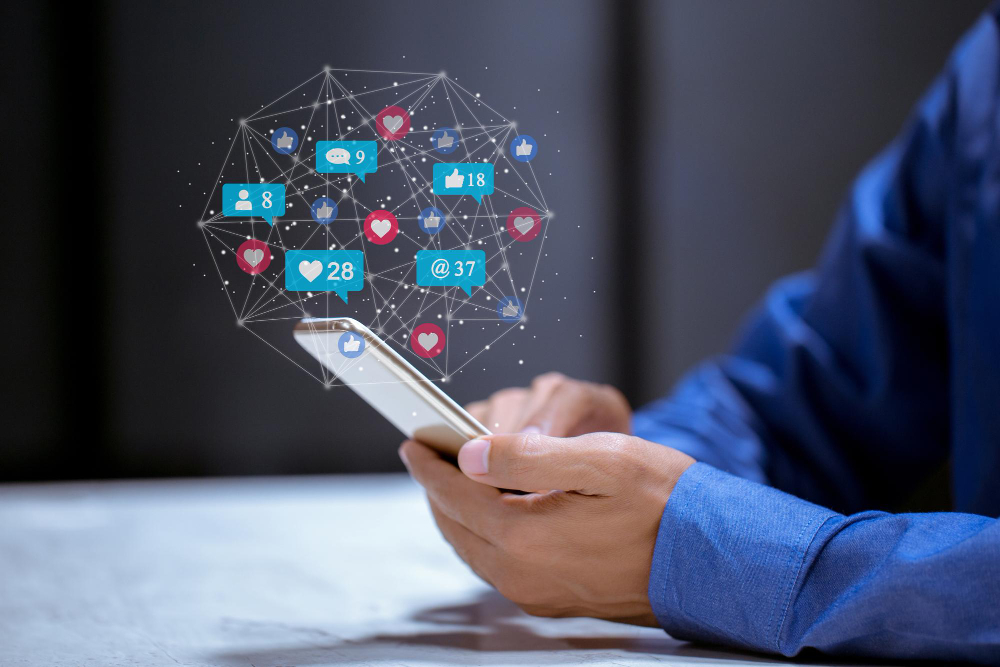How social media algorithms work in 2025
Alina2025-11-03T09:43:04+02:00
The mind behind your feed: how artificial intelligence is shaping what you see on social media in 2025!
Why does your feed seem to read your mind?
Have you ever stopped to wonder why your Facebook, Instagram, or TikTok feed seems to anticipate your interests with amazing accuracy? Or why, after searching for a product online, you are “followed” by ads for it across all platforms? The answer, in large part, lies in the power of artificial intelligence (AI). In 2025, AI is the invisible engine that personalizes and shapes our social media experience in profound ways.
How do these social media algorithms work?
This personalization is powered by complex machine learning algorithms that analyze vast amounts of data about your behavior to predict what will keep you connected.
- Direct interactions: Likes, shares, comments, and saves are clear signals to AI about the content you like.
- Time spent: How long you spend on a post or video is a crucial indicator. Even a few seconds of pause in scrolling is recorded.
- Content type: Do you prefer video, images or text? About what topics? The algorithm learns your format and topic preferences.
- Third-party data: Many platforms collect data about your activity on other sites (with your consent when you created your account). They know which news sites you read or what products you search for in online stores.
AI, advertising and the example of retargeting in Romania

A highly visible application of AI is targeted advertising. Have you searched for a laptop on eMAG? It's no coincidence that you'll see ads for laptops on Facebook or Instagram shortly after. This process is called retargeting (or remarketing). Tracking pixels on store websites tell social platforms what you've been interested in, and AI serves you personalized ads.
Advantages and disadvantages: an overview
AI-based personalization has both significant benefits and risks.
Benefits: a more relevant experience
The main advantage is that you are exposed to content that better matches your interests. Algorithms can suggest new accounts or topics, and advertising becomes, in theory, less intrusive and more useful.
Risks: filter bubbles and privacy
The biggest downside is the creation of “filter bubbles” (echo chambers). By constantly being exposed to content that confirms your opinions, you risk isolating yourself from diverse perspectives. During election periods or on social issues, this can lead to polarization. In addition, massive data collection raises legitimate concerns about privacy and how our information is used.
How can you navigate more consciously in the AI era?
- Be aware: Understanding that the feed is algorithmically shaped is the first and most important step.
- Diversify your sources: Actively seek out different perspectives and follow accounts with diverse opinions. Don't just rely on what the algorithm "serves" you.
- Manage settings: Explore the privacy options in each app to control, as much as possible, the data collected.
- Interact deliberately: Your likes "train" the AI. Be selective with the signals you send.
For more interesting information about social media, read our article: TikTok – evolution, impact and perspectives in Craiova and globally
Conclusion: an informed user is in control
Artificial intelligence has radically transformed the way we consume information in 2025. While personalization can bring benefits, it is crucial to be aware of the mechanisms behind it and the potential drawbacks. Understanding these processes is essential. For companies that want to use the power of technology constructively, collaborating with experts in personalized IT solutions, such as Altanet Craiova, becomes a key factor in navigating the digital landscape. Ultimately, you control the click – use it wisely.


Leave a reply